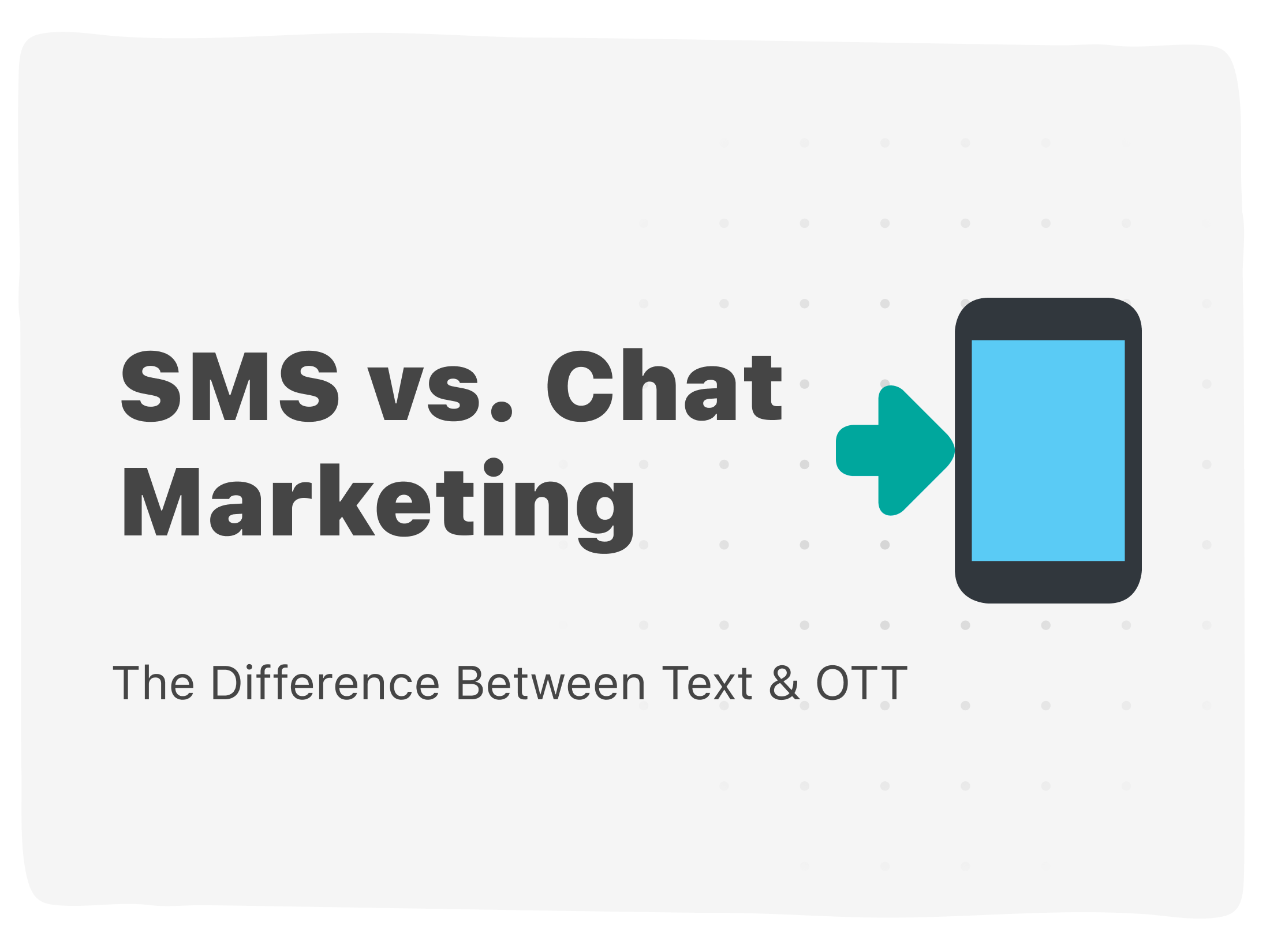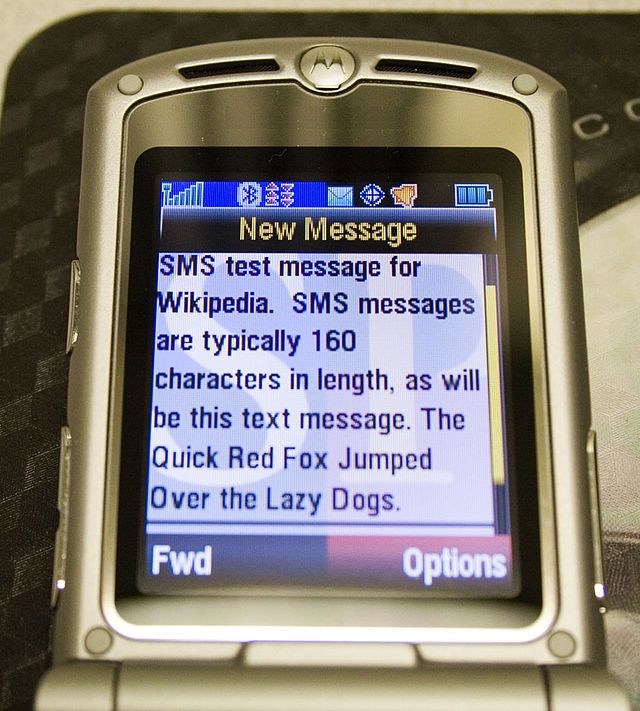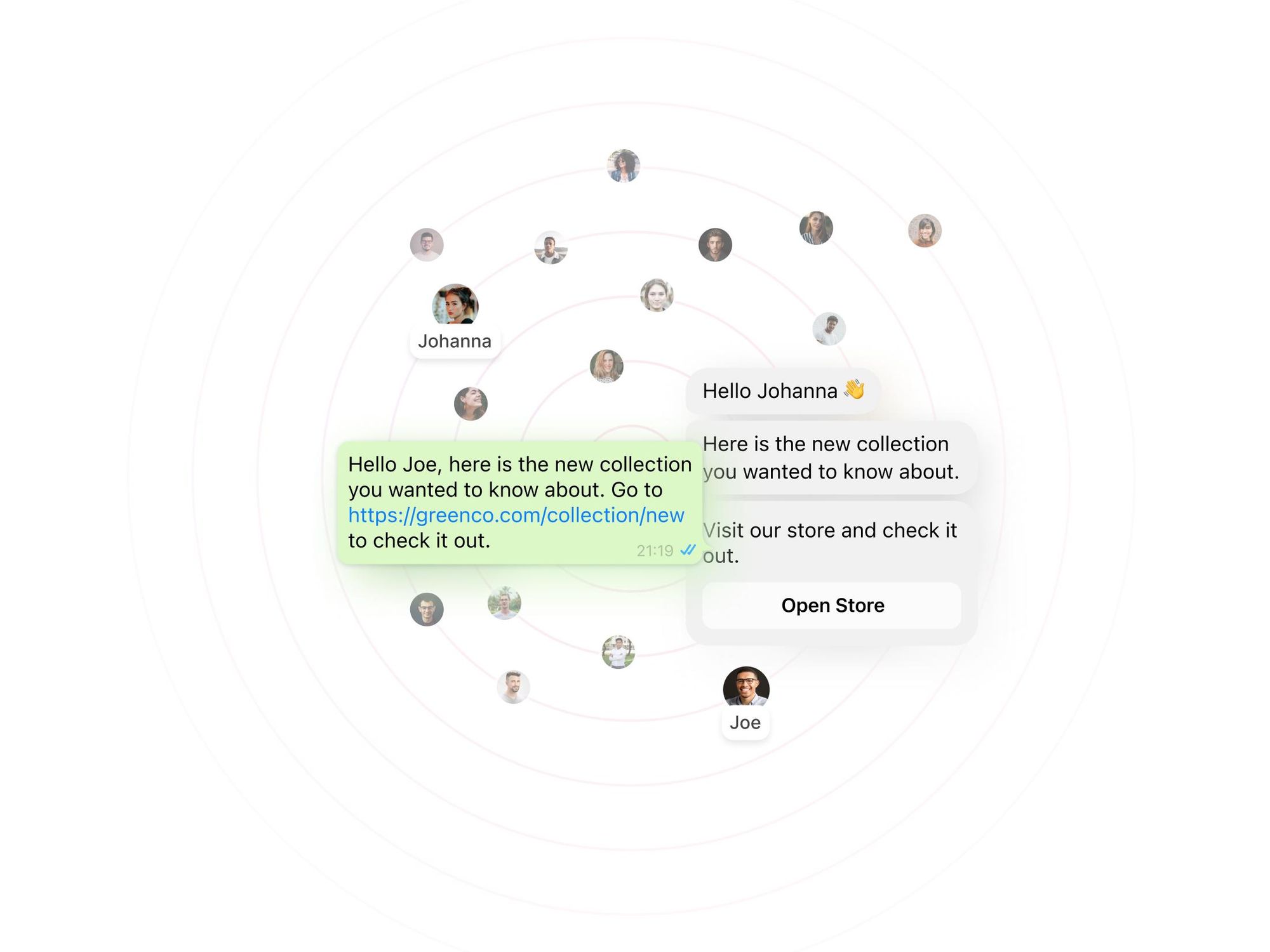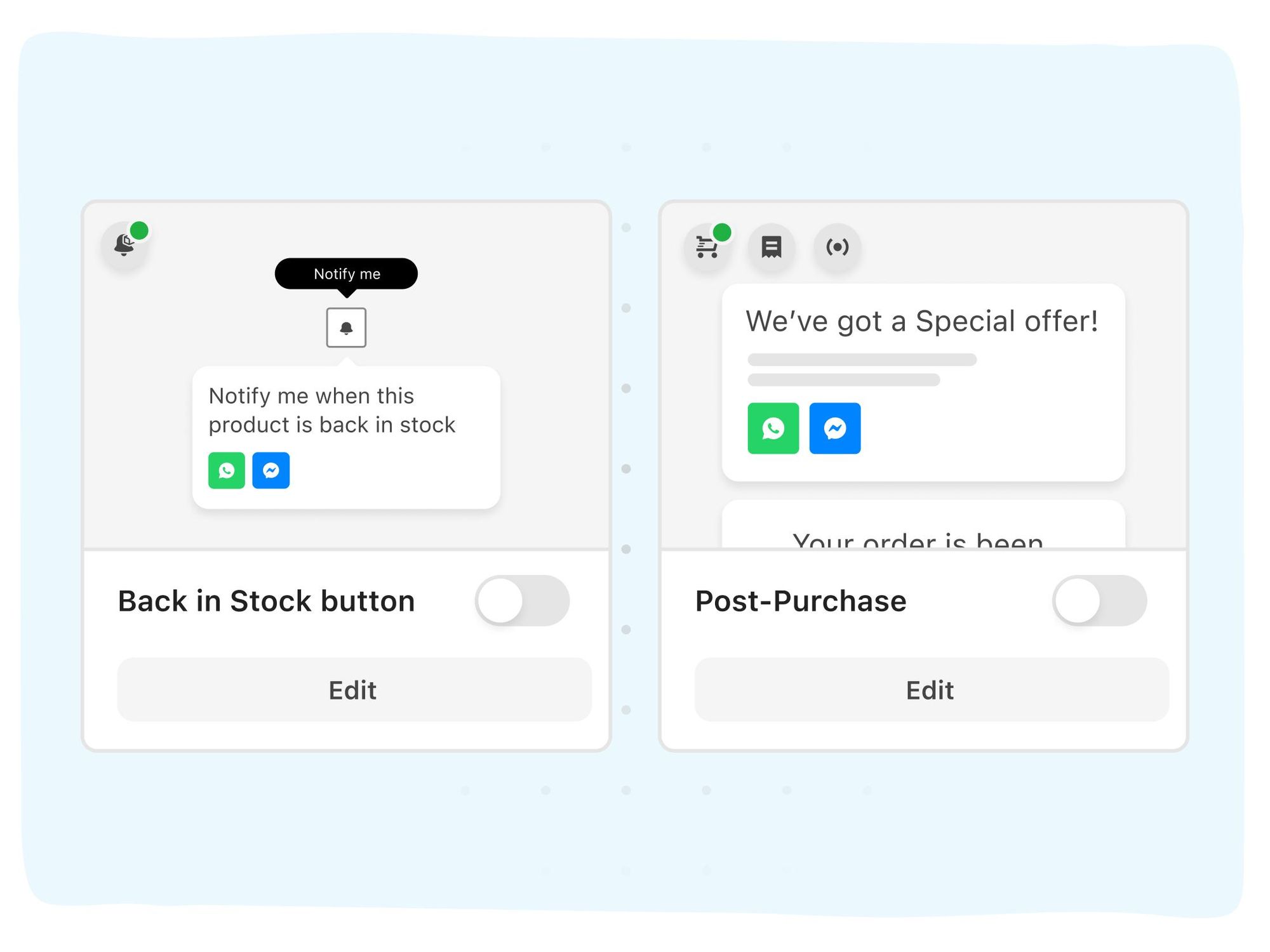SMS Marketing vs. Chat Marketing: The Difference Between Text and OTT

If you own a smartphone - highly likely, considering it’s 2021 - you probably text and use chat apps on a daily basis. In recent years, SMS text messages and chat apps have risen in popularity as marketing channels.
We did research on and compared SMS marketing and chat marketing, so we can show you the benefits of each.
Where SMS marketing has been around since as early as 2003, using instant messaging apps to market products and connect with customers is a relatively new development.
There are quite a few differences between the two channels, especially when it comes to pricing, privacy, safety, who you are targeting, and where.
Let’s take a closer look at each of these conversational marketing channels.
Table of contents
What is SMS marketing?
Benefits of SMS marketing
Disadvantages of SMS marketing
What is chat marketing?
Benefits of chat marketing?
Disadvantages of chat marketing?
Comparison: SMS marketing vs. chat marketing
SMS marketing vs. chat marketing: which one is best for your business?
What is SMS marketing?
SMS marketing is the interaction between brands and their (potential) customers using text messages. Businesses can use SMS to send promotional messages and sell more products, engage their audience, or run customer support.
SMS marketing, like email marketing, is an owned channel. Like with email, you decide who receives your SMS marketing messages, what you share, and when you share it. Instead of a list with email addresses, you will need a list of phone numbers to get started.
You’re somewhat limited with the type of content you can send in an SMS. For pictures, GIFs or animated text, you will need to use the MMS (multimedia message service) format.
SMS text messages are sent over cellular networks. These messages are also limited to 160 characters, something SMS marketers should take into account.
What are the benefits of SMS marketing?
What’s great about SMS marketing is that it’s permission based. This means that customers - usually - give their explicit permission to be marketed to. This makes SMS marketing more effective than other traditional forms of ‘interruption marketing’.
Other benefits of SMS marketing include the following:
- It’s very scalable. Everyone owns a cell phone, and all these phones can receive texts. This means SMS marketing allows you to reach nearly everyone.
- It’s sent instantly. SMS messages are sent very quickly. Meaning you can really control the exact moment a marketing message is received.
- It’s easily trackable. You can track and measure which messages are performing well, and which aren’t. Making it very easy to improve your SMS marketing continuously.
All of the above mean SMS marketing generally has very high average open rates. Often even reaching upward of 90%.
What are the disadvantages of SMS marketing?
One of the main disadvantages of SMS marketing is that the message format is severely outdated. The SMS communication protocol hasn’t changed much since it was invented. But tech and the way people communicate have changed considerably.
 SMS has a limit of 160 characters
SMS has a limit of 160 charactersIf we summarize the biggest disadvantages of SMS marketing, these would be:
- SMS messages are short. You don’t have much space to get your message across. Continuing in an extra message means you pay extra, too.
- Unwanted messages can kill your brand. Make sure people actually gave permission to be sent marketing messages through text, and comply with data & privacy regulations.
- People are afraid of fraud. Reply rates for SMS can be rather low, since a lot of fraudulent activity takes place through SMS, leading people to be mistrustful.
If you want to get started with SMS marketing, you will also need to find a provider or a mobile phone agency to deliver the text messages for you. Be aware that there are costs involved here.
Now let’s take a look at the more recent concept of using instant messaging apps to practice marketing in a similar way.
What is chat marketing?
In the past few years, chat marketing has made an enormous impact on the online marketing landscape. Chat marketing is an innovative approach to customer acquisition and engagement, using instant messaging apps.
These messaging apps are the ones that people use to communicate with each other every day. You probably have one of them installed on your phone, too.
Think of apps like WhatsApp, Messenger, or Instagram Direct. But also, to a lesser extent, Telegram, Signal and live chat interfaces on websites.

Businesses are using these chat messaging apps to send promotional messages and sell more products, run customer support or otherwise engage with customers. And the younger an audience is, the more like they are to feel more comfortable with this mode of communication.
Chat marketing messages are sent using ‘over-the-top’ (OTT) messaging apps. Over-the-top is a term referring to broadcasting messages over the internet, instead of using telecommunications companies and mobile networks.
What are the benefits of chat marketing?
Like SMS marketing, chat marketing is also consent-based, but usually even more so. This is due to the fact that OTT messaging apps aren’t operating on an open network. The companies that own these apps also help regulate them.
Take the example of using WhatsApp for chat marketing. Users need to give explicit permission to receive marketing messages, and you can’t just send them anything you want.
This keeps their messaging apps from overflowing with spam messages, and helps WhatsApp keep its app ecosystem user-friendly and safe.
Other benefits of chat marketing include the following:
- Rich features. Most OTT messaging apps allow you to send rich visuals, cards with buttons and links, quick reply buttons, etc.
- High open and click rates. Open rates for chat marketing often surpass the 90% and click rates are 5x higher than email.
- Consent-based. Most chat marketing platforms have built-in systems to guarantee all your marketing messages are warranted. Keeps the spam away, and end-users happy.
- Private and safe. OTT messaging apps like WhatsApp, Messenger and Telegram are end-to-end encrypted. They also aren’t linked to any personal identifiers.
Chat marketing is still in its early days, but developing into a more mature marketing tactic. For instance, it was only recently announced that Instagram DM is opening up possibilities for marketing automation.
What are the disadvantages of chat marketing?
One of the main disadvantages of chat marketing is that you need to make sure you know which OTT messaging app your audience prefers. Usage differs greatly per region. For instance, in the US, Messenger is the app of choice, whereas in most European countries, WhatsApp is dominant.
Then again, Facebook is working to make these apps interoperable in the future, which would solve this problem altogether. If you have a Shopify store, it’s also possible to offer both options at the same time using something like the Omni Opt-in.
If we needed to mention more disadvantages of chat marketing, we’d include:
- Internet dependency. OTT messaging apps don’t work without an internet connection. This might become an issue in developing regions.
- Mobile dependency. Messaging apps don’t work exclusively on mobile, but the desktop versions of OTT messaging apps aren’t all equally great.
Other than that, early adopters of chat marketing campaigns are probably going to set themselves apart from their competitors with ease.
 The Omni Opt-in allows people to choose the OTT app they want to receive messages on
The Omni Opt-in allows people to choose the OTT app they want to receive messages onNow let’s dive deeper into a more direct comparison of SMS marketing and chat marketing:
Comparison: SMS marketing vs. chat marketing
Apart from what we’ve already mentioned, there are several differences between SMS marketing and chat marketing deserving more attention. If you want to find out which one works best for your business, keep reading.
There are several aspects of these two marketing tactics that we need to look at:
- Pricing - there's a big difference in costs between SMS and chat
- Safety - fraudulent use of SMS (also known as 'smishing') is a real problem
- Privacy - encryption practices differ greatly between SMS and chat
- US vs. EU - what works and what doesn't is dependent on where you operate
Pricing
One factor that OTT messaging apps are eating up more and more of the consumer SMS market comes down to pricing. OTT chat is a much less expensive mode of communication than SMS, especially in developing markets.
Whereas in North America and the EU, unlimited SMS might be the standard in monthly mobile plans, in developing telecom markets, this is not the case.
In these countries, OTT messaging services like WhatsApp and Messenger cost significantly less. This is because these services run over the internet instead of telecommunications networks. OTT apps are generally much cheaper.
But even if end-users have unlimited SMS capabilities, sending them out over cellular networks comes at a significant cost. This means chat marketing is way more scalable than SMS.
Safety
Fraudulent use of SMS messages is widespread. One common way to use SMS for fraud is through the impersonation of, for instance, courier services.
People with malicious intent will send out SMS messages saying that a parcel is ready for pickup, including a link to track the shipment status. These links will have unknowing receivers download a malicious app, used for phishing or other fraudulent activities.
The problem with this is twofold:
- SMS messages are sent from mobile phone numbers, which are difficult if not impossible to verify for the receiver
- The telecommunications companies sending out these messages usually have little to no control over their contents
With chat marketing, the companies behind the messaging apps take a lot more responsibility over the messages sent out through their networks.
WhatsApp, for instance, will only allow businesses to send out pre-approved message templates. Also, the businesses that send out these messages have verified Facebook Business profiles, making fraud infinitely more difficult.
Privacy
In many cases, your mobile phone number is linked to other personal information or personal identifiers. With messaging apps, this is usually not the case.
Messenger is linked to your Facebook profile, and Instagram is linked to your Instagram account. Neither of these need to be linked to your actual identity or sensitive personal information.
Additionally, these OTT messaging apps tend to be end-to-end encrypted. The privacy-focused protocols for SMS are a lot less stringent, making them more easily accessible to potentially malicious third parties.
Again, identity theft and fraud are just around the corner when it comes to SMS. After all, mobile phone numbers are still often used for two-factor authentication (2FA).
Interested in the topic of privacy in marketing? Read our article The Future Of Private And Consent-Based Marketing 👈
US vs. EU
One last factor we’d like to look at is the situation in the US vs. the EU. SMS marketing is quite popular in the US, but there are quite logical reasons for this.
First of all, the US has a unified telecommunications network, meaning that all SMS messages will be sent using the same format and country code.
In the EU, this is not the case, which might result in end users receiving text messages from one country, specific country code included, in another country. These end users aren’t going to be very trusting of phone numbers from countries they don’t recognize.
Apart from that, US prices for sending SMS messages are significantly lower than in the EU. Not only that, but the prices for sending SMS messages in the EU can differ greatly per country.
Chat marketing through OTT messaging apps that use the internet circumvent all of these issues.
SMS marketing vs. chat marketing: which one is best for your business?
In summary, it makes sense to consider both SMS marketing and chat marketing for your business. Which one works best for you hinges greatly on your budget and where your audience is located, geographically.
Do you have a global audience, or do you operate outside the US? Chat marketing is most probably the way to go.
But if you only work in the US and have money to spend on sending out messages that are no longer than 160 characters, don’t need rich visual features, and need to reach anyone with a mobile phone? Then perhaps you might opt for SMS marketing.
Which one are you going to try?
Or why don't you connect with ShopPop directly through Messenger at https://m.me/shoppophq